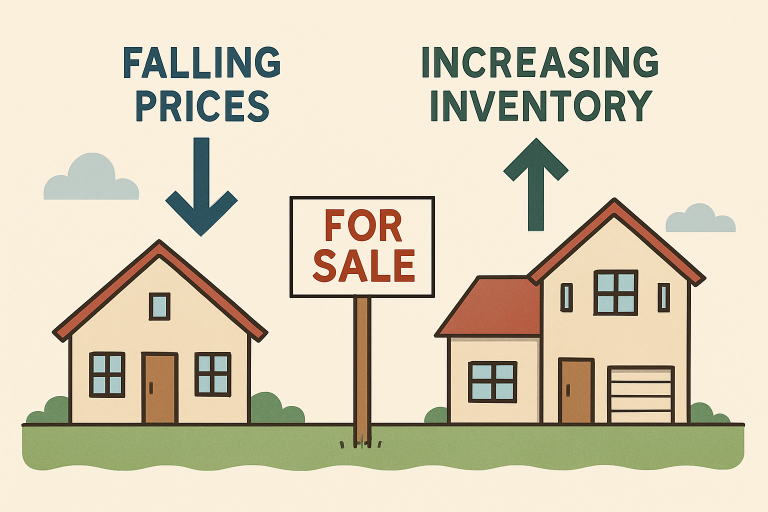Table of Contents
- Current Market Trends
- Understanding Mortgage Rates
- Inventory Levels and Availability
- Regional Variations
- Technological Advancements
- Sustainability and Design Trends
- Navigating the Buying Process
- Conclusion
Today’s housing market presents a rapidly evolving landscape, with many factors influencing a buyer’s journey and options. Whether you are just starting your search or have already explored potential homes, understanding these shifts is essential for making informed decisions. For those considering relocating or investing in a dynamic region, browsing Colorado Springs, CO homes for sale can provide valuable insights into how regional trends impact opportunities and pricing.
Market supply has shifted in favor of buyers in many locations, providing increased choices and more leverage in negotiations. Staying informed of current and emerging trends is crucial, whether you’re exploring urban areas, suburbs, or scenic regions. The following comprehensive guide will walk you through what to expect and how to best position yourself for success.
Current Market Trends
As 2025 progresses, the U.S. housing market has entered a new phase, increasingly characterized by surplus inventory and improved conditions for buyers. Recent data reveals a notable gap between the number of sellers and buyers—around 500,000 more sellers—offering prospective homeowners the upper hand. This surplus leads to a broader pool of properties, increases chances for negotiation, and frequently results in sellers making price adjustments or providing extra incentives to close deals.
Buyers should pay attention to these trends, as the market may present unique opportunities to not only secure a home but also do so with advantageous terms that were rarely seen during previous seller-dominated years.
Understanding Mortgage Rates
Mortgage interest rates continue to play a significant role in home affordability. Although not at the historic lows seen in early 2020s, rates have receded slightly from their recent peaks. In early 2025, the average 30-year fixed mortgage dipped under 7%, improving affordability for many households. This change can lead to reduced monthly payments, allowing buyers to consider properties that might have been previously out of reach. According to Investopedia, factors such as inflation, Federal Reserve policies, and economic growth trends all influence mortgage rates. Therefore, prospective buyers should track rate movements, as even modest shifts can have a profound impact on total home ownership costs. Consulting with a mortgage professional and getting pre-approved can help you lock in advantageous rates before making an offer.
Inventory Levels and Availability
One of the most impactful changes in the current market is the jump in housing inventory. Active real estate listings have increased by over 28% nationwide compared to the previous year. This boost means less pressure on buyers to rush decisions or overbid, while also allowing them to explore a wider variety of locations, home styles, and price ranges.
With more properties on the market, buyers gain the time and flexibility to secure inspections, negotiate repairs, or look for homes with unique features, making for a less frantic—and more satisfying—purchasing process.
Regional Variations
Real estate remains highly localized, and market conditions can vary significantly from state to state or even from city to city. For instance, Indianapolis currently exhibits a strong buyer’s market, characterized by a significant gap between sellers and buyers, resulting in reduced prices and increased choices. In contrast, markets like Kansas City remain relatively balanced, displaying only slight differences in supply and demand.
These variations underscore the importance of researching local data and trends, consulting with area experts, and considering regional economic drivers, such as employment opportunities, population growth, and infrastructure developments, before making a move.
Technological Advancements
Innovations in real estate technology have revolutionized how buyers search for and purchase homes. Virtual tours allow you to explore homes remotely, saving time and making it easier to narrow down options before visiting in person. Online listings, digital contracts, and AI-powered property matching tools have become industry standards, streamlining nearly every step of the property buying and selling process.
Embracing these advancements means buyers can act quickly, with up-to-date information at their fingertips and the capability to make strong, informed offers from anywhere.
Tips for Leveraging Technology Effectively:
- Regularly review new listings and use filters to narrow your options.
- Save and compare favorite properties with online tools.
- Participate in virtual open houses to get real-time insights from listing agents.
Sustainability and Design Trends
Modern home seekers are thinking beyond basic amenities, with eco-friendly features and innovative layouts taking priority. From energy-efficient appliances and smart thermostats to solar panels and water-saving fixtures, sustainable upgrades are now a major selling point. Design-wise, open concepts, multifunctional spaces, and biophilic designs—incorporating natural light and greenery—are highly coveted for their appeal and livability.
Investing in a property with sustainable features not only benefits the environment but can also lead to long-term savings and increased resale value, all while enjoying a comfortable, future-forward home.
Navigating the Buying Process
Preparing for your purchase is essential in today’s market, even as conditions become more favorable for buyers. A successful home-buying experience requires:
- Getting Pre-Approved: Obtain pre-approval for a mortgage to determine your budget and strengthen your offer in the eyes of sellers. As noted by Consumer Reports, the process has become more complex in recent years, making it essential to gather all required financial documents early and work closely with your lender to avoid delays.
- Working with Expert Agents: Partner with a seasoned real estate agent for guidance on neighborhoods, pricing, and negotiation strategy.
- Staying Up to Date: Regularly check market reports and new listings, attend open houses, and be prepared to act when you find the right home.
Being informed and strategically prepared can give you a clear advantage, regardless of how the broader market fluctuates.
Conclusion
The residential real estate market is in flux, shaped by shifts in inventory, mortgage rates, emerging technologies, and changing buyer priorities. By staying informed, utilizing digital tools, and collaborating closely with experienced professionals, today’s homebuyers can confidently navigate the challenges and opportunities of changing markets to find a home that suits both their lifestyle and budget.
















Leave a Reply